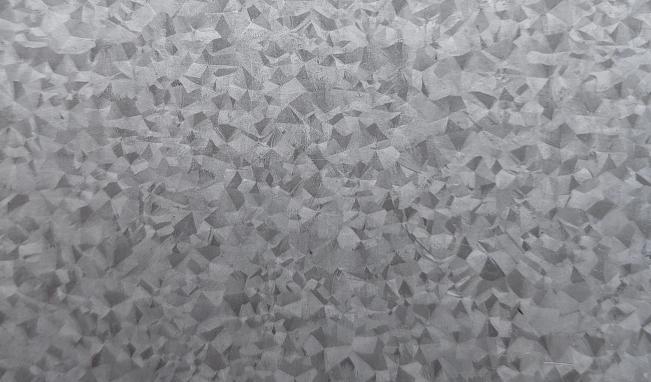Galfan is one of the least-known substrates in steel coating due to its late entry into the industry. Find out why Galfan-coated steel products last for years!
What is Galfan
Galfan refers to steel with zinc-aluminum coating on its layers to achieve a superior anti-corrosive property. It offers protection to various steel grades compared to steel with a galvanized zinc coating. The coating provides better forming and welding properties to the steel and helps prolong its lifespan.

Steel products with Galfan coating are known for their extraordinary performance compared to galvalume, or galvanized steel. Galfan is a late invention among the most popular substrates in the post-frame industry. However, it is the most resistant to corrosion due to its 95 percent zinc and 5 percent aluminum coatings.
Galfan-coated steel has better adhesive, formability, and weldability properties, enabling a micro-scaled coating structure. These properties make the steel pliable and suitable for deep drawing and painting. Only licensed Galfan manufacturers can produce Galfan brand steel and distribute the products to customers.
Processing of Galfan Coated Steel
Galfan-coated steel undergoes four stages of processing: forming, welding, joining, and painting. Let’s discuss each step:
Forming
The forming process works similarly with uncoated steel when applying zinc coatings to steel. It does not require extensive modifications except for the surface behavior, which needs changes in lubrication, holding forces, and tooling geometry.
The metal coating acts as a lubricant, working on gentle surface pressure during this stage. The steel’s interface creates a thin intermetallic layer making it resistant to cracking during the forming stages. The coating forms a lamellar microstructure that makes the steel suitable to roll forming, depth drawing, bending, and profiling.
Some factors influence the forming stage of Galfan-coated steels, such as steel grade, component geometry, thickness, surface quality, tool, and metal coating type.
Welding
Welding techniques come in various forms when applying it to metal-coated products. These welding methods are arc, laser, and resistance welding. The welded joints have comparable mechanical properties to non-coated steel and use the same methods as zinc-coated steel.
The coating thickness reduces when applying the Galfan method, wherein it requires a lower welding current, which prolongs the service life of the electrodes.
Resistance welding offers superior results to metal-coated steels. The anti-corrosive properties of the steel with zinc-based coating stay permanently in the area after the spot welding. This method needs a higher electrode force and current than uncoated steels because the layer has lower contact resistance.
A reduced coating thickness decreases the required welding current, while an increased coating thickness requires a higher one. Unnecessary thick coatings in welded applications are not advisable as it does not offer weldability property.
Laser welding offers better weldability to metal-coated products due to its low heat and narrow welding input. If applying the fusion welding techniques, ensure minimal heat input to limit the metal-coated steel’s heated zone.
During the welding process, the area where the application takes place should have proper ventilation to prevent breathing in welding fumes that can affect your health due to its zinc oxide.
Joining
Zinc-based coatings suit all types of adhesives, such as polyurethane, acrylic, epoxy, or glue—the adhesive sticks well to the surface of Galfan-coated steel, which protects the joints free from corrosion.
Adhesion is perfect if there is an absence of impurities and oils on the surface of the steel. Aside from adhesive joining, manufacturers use mechanical joining in Galfan coating. This method uses tab and non-tab methods.

Painting
Adding color to the final product is for aesthetic appeal and helps improve the anti-corrosion property of Galfan-coated metals. Galfan offers a superior painting substrate to steel.
The steel’s skin passes the surface quality B when the painted surface needs high surface quality. The steel should be free from impurities and oils before applying the paint. Another good option is to use zinc phosphate pre-treatment to the surface for the best coating results.
The Benefits of Galfan Coating
Galfan coating offers a lot of benefits to steel products, such as:
- It adds triple corrosion protection compared to galvanized steel using its alternative coating chemistry and reduces coating weights.
- It produces sustainable steel products at lower costs.
- The zinc bath helps reduce the viscosity of the molten metal. This method lowers coating thicknesses more than traditional zinc-based coatings.
- It ensures longevity in large and small projects due to its longer service life.
- It offers reliable formability and weldability properties.
- Its ductility property is suitable for deep drawing.
Galfan vs. Galvalume
Galfan and galvalume are both metallic-coated steels. They differ in their coating process. Galfan undergoes cold rolled steel coating with five percent mischmetal and aluminum and ninety-five percent zinc. Galvalume undergoes a non-stop hot dip process with a glazing of 55 percent aluminum and 43.5 percent zinc with 1.5 percent silicon.

The International Lead Zinc Research Organization created Galfan in 1981, while BIEC International Incorporated developed galvalume in 1972. Galfan might be younger but more resistant to corrosion than galvalume.
A lighter coating weight guarantees extra corrosion protection to Galfan-coated metals. It is ductile, formable, and weldable compared to galvalume due to its high zinc content.
Conclusion
Galfan is a popular choice by manufacturers in making white goods and automobile parts. Its superior corrosion property is cost-saving as the project can last long.